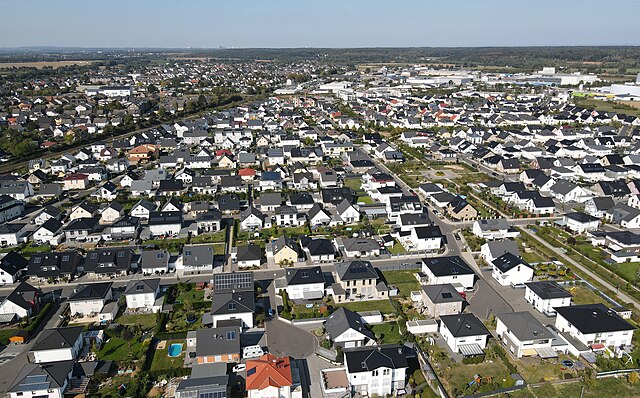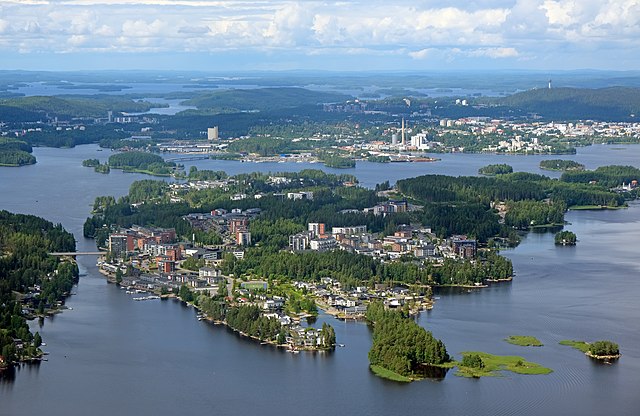A streetcar suburb is a residential community whose growth and development was strongly shaped by the use of streetcar lines as a primary means of transportation. Such suburbs developed in the United States in the years before the automobile, when the introduction of the electric trolley or streetcar allowed the nation’s burgeoning middle class to move beyond the central city’s borders. Early suburbs were served by horsecars, but by the late 19th century cable cars and electric streetcars, or trams, were used, allowing residences to be built farther away from the urban core of a city. Streetcar suburbs, usually called additions or extensions at the time, were the forerunner of today's suburbs in the United States and Canada. San Francisco's Western Addition is one of the best examples of streetcar suburbs before westward and southward expansion occurred.
Advertisement for a subdivision in Cincinnati, Ohio, touting the short walk to nearby rail stations
A Toronto streetcar on Queen Street East in 1923 serving streetcar suburbs such as Riverdale and The Beaches.
A Toronto streetcar in 2007 serving the exact same areas.
1920s tract houses in Mt Lebanon, on narrow lots backing onto the streetcar line
A suburb is an area within a metropolitan area which often contains most of the area's economic activity, which may include commercial and mixed-use. A suburb can exist either as part of a larger city/urban area or as a separate political entity. The name describes an area that is either more or less densely populated than an inner city. In many metropolitan areas suburbs rise in population during the day and are where most jobs are located; being major commercial and job hubs, many suburbs also exist as separate residential communities within commuting distance of a larger city. Suburbs can have their own political or legal jurisdiction, especially in the United States, but this is not always the case, especially in the United Kingdom, where most suburbs are located within the administrative boundaries of cities. In most English-speaking countries, suburban areas are defined in contrast to central city or inner city areas, but in Australian English and South African English, suburb has become largely synonymous with what is called a "neighborhood" in the U.S., but it is used in contrast with inner city areas.

Nassau County on Long Island, New York (above) is emblematic of the continuous sprawl making up the inner suburbs of New York City, in contrast with Monroe Township, New Jersey (below), characteristic of an outer suburb, or exurb, of New York City, with a lower population density.
Weilerswist, a suburb of Cologne, Germany
Männistö, a suburban neighborhood in Kuopio, Finland
Saaristokaupunki (Archipelago city), a new suburban area in Kuopio, Finland








